Vegetable Stock Powder

This diy vegetable stock is in powder form (ergo a powdered vegetable stock), therefore it takes up little space and keeps forever. Plus it is made from leftovers and therefore costs exactly nothing. You can also customize it according to your wishes and needs. What you won’t find as an ingredient are sugar, additives, flavor enhancers, or glutamate – it’s all natural, healthy, vegan (vegetarian), organic (if you like), and gluten-free. Let me show you how easy and rewarding it is to make your own zero-food-waste vegetable stock powder from frozen scraps.
How to use veggie stock powder?
I use vegetable stock powder (also known as vegetable broth powder, vegan stock powder, or bouillon powder) for soups, like adding flavor to this simple, clear, and so good Italian White Bean Soup, this creamy and rich Potato Leek Soup with Beluga Lentils or hearty Albanian White Bean Soup.
This stock powder is not only suitable for soups. Since there is no crap included, you can use this good stuff to season any other food. I use it when I am making Krautfleckerl (Austrian Noodles with Cabbage) or Stewed Red Cabbage. It’s also great for making Risotto. Or any other cooking where you would add salt and pepper.
Make your own vegetable stock powder
Veggie stock powder is easy to make yourself. Basically, it’s about removing the moisture from the vegetables and herbs in order to add it back afterward. Sounds insane, but it’s not, because here we use shriveled leftovers and scraps, and collect them in small pieces until we have enough. Plus, the end product is a powder that can be kept for a long time.
A wonderful vegetable stock, the best in my opinion (I wouldn’t trade it for any other store-bought one), and it’s all made from “waste”. By the way, I’ll tell you below what exactly goes in and what doesn’t.
The method that I am going to show you works without using a Thermomix, without boiling it, and without a dehydrator. Basically, the process (as always, the detailed recipe is at the end of this post) for a homemade vegetable stock powder from scratch is as follows:
- Cut leftover vegetables into pieces, place them in a freezer bag in a freezer. Herbs are collected separately. More about what goes well and what doesn’t in the following chapters.
- If you have enough, about two to three freezer bags, each with a volume of about 2-3 l, you can start drying in the oven. First the vegetables are dried, then the herbs, as they are ready more quickly. The drying process takes a few hours, but you don’t have to do anything during this time, apart from turning it roughly every 1-2 hours.
- Next, you blend the dried stuff. Use a blender that you can use to grind oatmeal or coffee, so you know it’s good for drying. I love my Kemar KSB-300 high-performance stand mixer. It is strong, of high quality, and also inexpensive! I treated myself with the set which includes the drying container. I think it could also work with a food processor, just not becoming that finely.
- Finally, the powdered vegetables and herbs are mixed with salt. I add about 1/4 to more like 1/5 (by eye) of the dried amount of salt. So 3/4 to 4/5 vegetables & herbs, the rest salt. You can also make your soup powder low-salt or even salt-free, e.g. as baby food. Or of course for yourself.
By the way, on my Instagram page you can find a highlighted Story with the title “Veggie Stock”. I documented the process from time to time a while ago. For a quick run-through, please also take a look at the video at the end of this post.
What to use …
Which ingredients go into vegetable stock? Bingo. Vegetables. Which vegetables and what else, I’ll tell you here.
Basically, you can use pretty much anything plant-based. My vegan stock powder consists of
- Vegetable leftovers that are already wilting or shriveling, such as an in the fridge forgotten half bell pepper, or the last 3 cocktail tomatoes from the packaging I bought a while ago.
- Peels, such as carrot peels or the first onion layer, that often comes along when peeling, but also the outer, hard parts of the leek.
- Things like the stalk (more on that in the next chapter) of broccoli, fennel, or celery stalks and the ends of garlic, carrots, or zucchini.
- Herb stalks, whether parsley, coriander, or dill. I collect those extra because they dry much faster.
- “Thin green stuff” like wilted parts of spring onions or thick stalks of large spinach leaves. I collect this “thin green stuff” together with the herb stalks.
- I even add cucumber when I cut off the first slice so that it is fresh again. Also, eggplant ends. But these are not ingredients that I would use primarily.
- I don’t eat mushrooms, I can’t say anything about that. But since there are mushroom broths, I think that they can also be used.
- Root vegetables like celery, carrots, parsley roots, or parsnip are great for vegetable stock.
- You can also use frozen vegetables if, for example, you have a pack with a few inside left.
- If you are not sure about a specific vegetable, you can always ask me in the comment section below.
So if you’re in the mood for making vegetable stock powder right now, but haven’t collected any leftovers, or don’t have a freezer compartment or don’t have space in it, or simply already live in the spirit of zero-waste, then buy some root veggies, add onions, herbs (I prefer to buy them in Turkish shops, there you get beautiful “bushes” there for little money) and whatever else you would like to have inside and start your first attempt.
… and what not to use
As mentioned in the previous chapter, there are foods that I don’t add as much, but that can still be used, such as cucumber or aubergines, and possibly mushrooms. However, there are a few things that really don’t belong.
- I think it goes without saying, but so that everything is really clear: spoiled parts, such as brown or even moldy spots, don’t belong here. Wilted is ok!
- I also don’t use the green, unattractive ends of carrots where the leaves grew.
- I don’t use potato peelings in the stock, either.
- If you want a vegetable stock powder without celery (seeds), nutritional yeast, or onion, simply omit these ingredients. You probably don’t tolerate them or don’t like them, so you won’t find them in the kitchen anyway.
What more to know …
How long does the vegetable stock powder keep?
Good question. I’d say forever if it’s completely dry and airtight. I’ve been in the following perfect cycle for years: while I’m using the vegetable stock powder for cooking, so many leftover vegetables and herbs accumulate that I have to have enough to dry before the available veggie stock powder runs out. So there is always enough in stock. By the way, I start about four drying processes per year.
What is the vegetable stock powder to water ratio for a clear vegetable broth?
Another good question. This recipe and further use are very flexible. I use about 1 to 1.5 tbsp of the soup powder for 500ml of water when I want to make a clear vegetable stock and less when I want to flavor a creamy vegetable soup like this Potato Leek Soup.
Doesn’t the drying process use a lot of electricity?
The oven runs for a few hours but: An oven with 200 C degrees (390 F) should consume an average of 1,500 watts of electricity, calculated down to 80 C degrees (175 F) which would be 600 watts. If we now assume a drying time of six hours, we are at 3,600 watts. To be on the safe side, we generously round up to 5,000 watts. With a high electricity price of 50 cents per kWh (i.e. per 1,000 watts), we are at a maximum of 2.50 euros (similar to US dollars) for a mason jar with the best vegetable stock powder (calculated on Austrian prices).
@plantbased.redhead
💚 Zero Food Waste Vegetable Stock Powder ✨ It’s so easy and rewarding to make your own zero food waste vegetable stock powder from scraps and leftovers! Basically, it’s about removing the moisture from the vegetables and herbs in order to add it back afterward. Sounds insane, but it’s not: 🤩 As this vegetable stock is in powder form, it takes up little space and keeps forever. 🥰 It is made from leftovers and scraps and costs nothing (beside a bit of time and energy). 😍 You can customize it according to your wishes and needs. 😋 Use it to make soups, but also to season any other salty dishes. 🥳 Without sugar, additives, flavor enhancers, or glutamate – all natural, healthy, vegan, organic (if you like) and gluten-free. 🛒 Ingredients You will need (shriveled) vegetable leftovers, scraps, and herb stalks 👩🍳 Preparation Check out my blog plantbasedredhead.com for the details! 🤗 powder
♬ Another One Bites The Dust – Remastered 2011 – Queen
Did you try this recipe?
I would love to see the result. Please do not forget to tag me on Instagram: @plantbased.redhead.cooks
Instagram Icon
Vegetable Stock Powder
Recipe details
Ingredients
- Two to three freezer bags, each with a volume of about 2.5 l (= 84.5 oz = 0.66 US gal) (shriveled) vegetable and herbs leftovers (see above for suggestions of types of vegetable scraps that work best)
- herb stalks (herbs and measurements are up to personal preference)
- ** Salt (optional) 1/4 to more like 1/5 (by eye) for every 3/4 to 4/5 of vegetables and herbs. You can also make your soup powder low-salt or even salt-free, e.g. as baby food.
Instructions
- Cut the vegetables into small pieces and place them in a larger freezer bag in the freezer. Herb stalks are collected separately (and do not need to be cut very small).
- If you have enough, that's about two to three freezer bags (mine hold 2.5 l = 84.5 oz), then it's time to dry everything in the oven. To do this, you take a baking sheet, put baking paper on it, and turn on the oven to approx. 90 C (195 F) circulating air.
- First, dry the vegetable pieces, as they take longer. It doesn't matter if the vegetables are a bit on top of each other. With the help of the handle of a wooden spoon, leave the oven door a tiny gap open. This is necessary so that the moisture can escape.
- After an hour or two, when the vegetables have already defrosted and some are a bit dry, stir them up and turn the heat down to 70 to 80 C (160 to 175 F).
- Now you can dry the herb stalks. At best, you have a second baking sheet (those things don't cost a lot) or a large casserole dish. If necessary, the vegetables on the first tray already shriveled, and you have gained space for herbs.
- From time to time, if you think about it, every 1–2 hours, you turn and stir everything. The drying process takes a couple of hours, around six, but that's just a rough guide. It all depends on whether you use a lot of vegetables with a high water content and how small or large they are cut (mine are always too big...). The pieces also never dry out at the same time. While the carrot skins are already dry, the tomato pieces next to them are still moist. It doesn't matter, in the end, some are just very dry and others are dry.
- Once everything is dry, blend it. Use a blender with which you can mix or grind dry food.
- If you have the feeling that the powder is not 100% dry, then dry everything again briefly in the oven and then blend it again if necessary. What we definitely don't want is residual moisture, which means mold as a result.
- Now you fill the powder in a mason jar, in which there is still enough space for salt. Namely, about 1/4 to 1/5 of the dried amount. So about 75% to 80% vegetables & herbs, the rest salt.




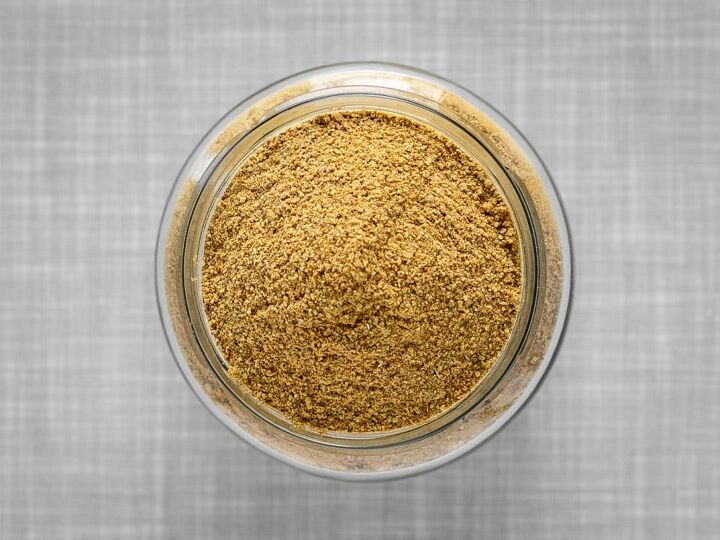







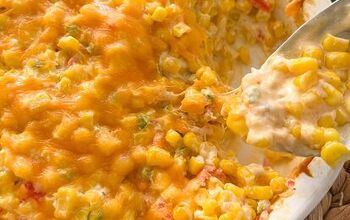

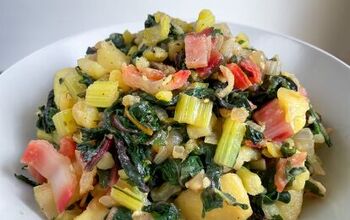

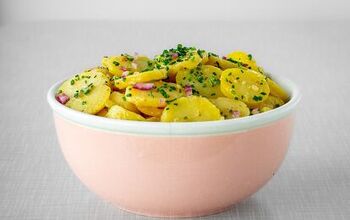

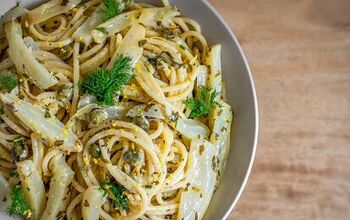


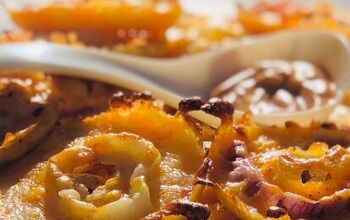



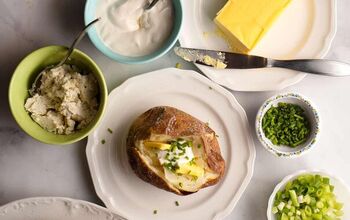

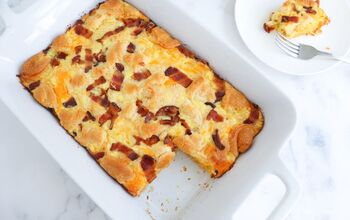

Comments
Share your thoughts, or ask a question!